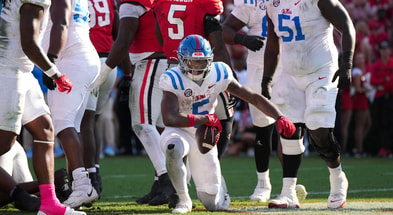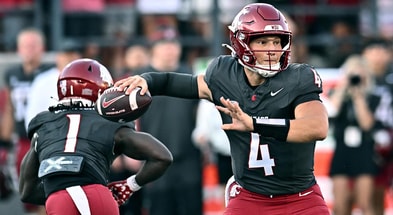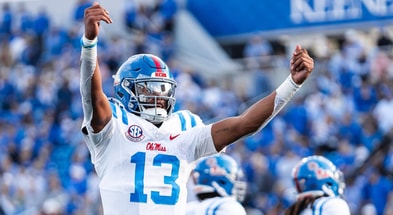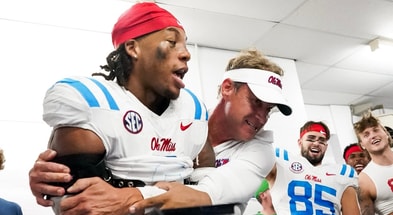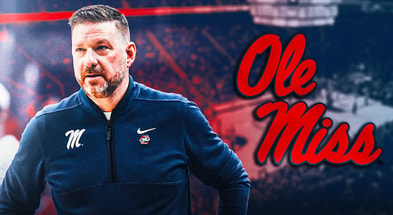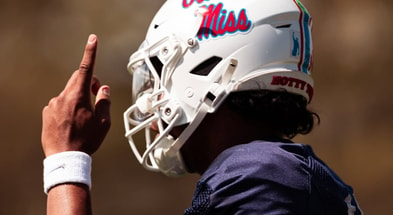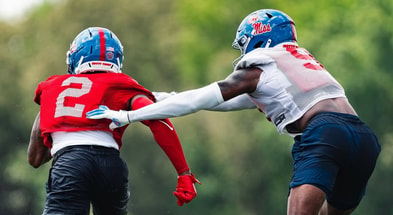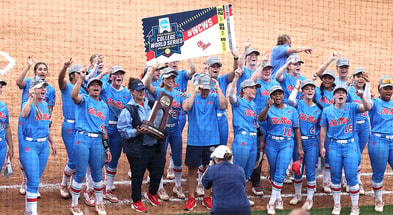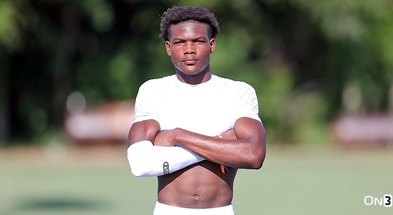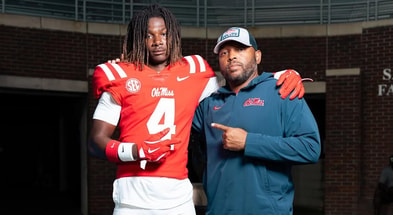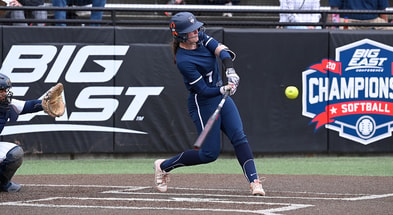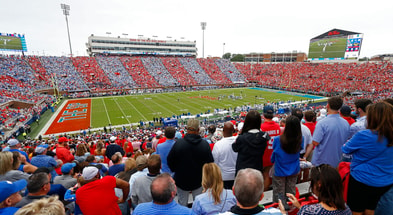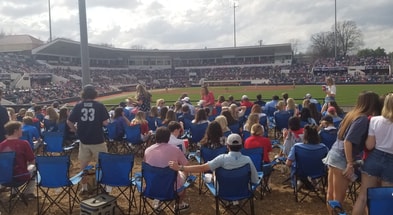Everything Greg Sankey said at 2025 SEC Media Days
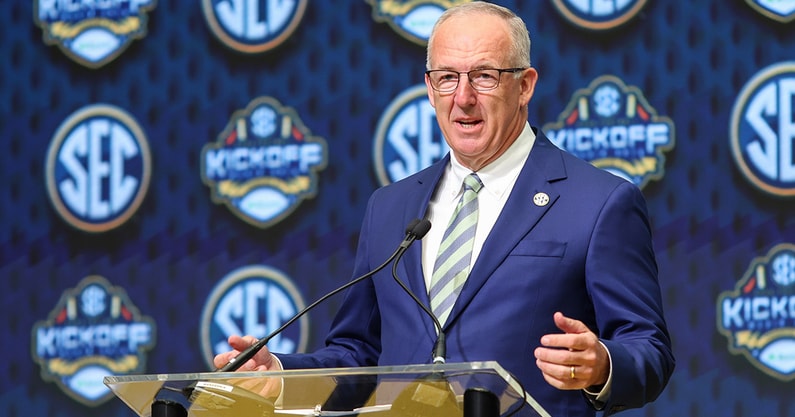
The 2025 Southeastern Conference Football Media Days is underway in Atlanta this week and on Monday commissioner Greg Sankey kicked things off with his annual address to the media in attendance.
Usual topics were addressed include revenue share, NIL, conference expansions/mergers among other topics. Sankey broached the topic of looking into a private equity option for the SEC, too.
Sankey also did not commit on a date for when the SEC football schedule would move to nine games or if it will stay at eight for the 2026 season.
Below is a snippet of Sankey’s lengthy opening comments plus what answers he provided to questions from the media.
OPENING STATEMENT
Greg Sankey: We’re living through a transformational moment across college sports. In fact, if you take a step back and go look at the iterative change over time, I don’t think there’s been a time in the last hundred years where so much change is in front of the college athletics enterprise as exists right now. It’s actually amazing and exciting to consider the importance of the time during which we lead and serve.
Let me be clear. From my perspective, college athletics is not broken. College athletics is not broken. It is under stress. It is strained. The answers we seek are tied into the complexities that have been referenced over time.
I went back and read my remarks from this podium or others over the last few years, and pretty consistently I’ve identified the challenges ahead with some of the decisions that we have to make. I don’t think the answers come from courtrooms completely. They don’t come from commentators or commentary. They don’t come from those outside sudden experts with their newest idea.
Those of us in higher education embedded in college athletics know the intricacies of what’s in front of us, and we all have to continue to adapt and have adapted as we seek to provide life impacting opportunities and lifelong memories for young people across our nation.
If you watch the college football landscape change across the Southeastern Conference, we remain both proud of what we achieved and excited about our future. That future is not something we wait for. It is something we seek to shape. We look forward to the year ahead with new opportunities, with new challenges, with certainly a set of new frustrations, with new faces, new results, and new hope.
QUESTION: Commissioner, every time I hear one of these coaches talk about the House NCAA settlement, they refer to listening to the advice of their lawyers and their administrators. I’m curious if you guys have any meetings as a league to help your teams kind of see this course, to continue the metaphor of this marathon?
Sankey: Yes, we have water breaks on marathons, if those are meetings. We provided updates leading into decisions, and the difficulty for us is you cannot implement the settlement until there is a settlement.
I’ve used a subgroup of coaches. We actually sent a note out to gather our coaches for another educational setting next week. We had video conferences with athletics directors, presidents and chancellors last week. When I was here for the College Football Playoff National Championship Game in Atlanta — it was kind of lonely because I didn’t have a team — but spent well over an hour on a video conference with our women’s basketball coaches, we’ve done the same with our men’s basketball coaches, and we use our meeting cycle regularly.
The fact that change was coming, I think, was well presented. The elements of the change that would be central to a settlement, I think that was well presented. It is the intricacies of implementation where we are running rapidly in the midst of the race to make sure we provide the most relevant and most current information. Some of that’s kind of time bound by working through a process with the plaintiffs and with the court.
Q: The clear public disagreement between the College Sports Commission and the collective association about what the rules seem to be, do you have an opinion on that, or how are we going to rectify that?
Sankey: We from the College Sports Commission think we’re operating sufficient with the settlement terms. We’ll have the right kind of communication with the authors of the letter and communicate and educate on why we think we have the right perspective to begin with.
Q: When do you anticipate having the format of 2026 football schedule finalized?
Sankey: First of all, I spent a long weekend in Charleston a few weeks ago, and it was my first time to walk around downtown, visit Fort Sumter, play Bulls Bay, and experience Folly Beach. I didn’t buy a newspaper while I was there, it was my four days away, so I owe you.
I’ve been careful about giving dates. I said repeatedly I learned during COVID that you want to use your time. It won’t linger terribly much longer. We have to make decisions about the ’26 season and adjust. If we’re going to go to nine games, then there have to be games moved or rescheduled. If we stay at eight, probably a little easier on that part of the logistics. Once we make a decision in the conference office, we’re pretty much ready to go. If you go back to when we made our last decision, it was in Destin, and two weeks later we had opponents out. Shortly thereafter, we were prepared with dates and sites sort of thing.
Q: Commissioner, you’ve talked about the differences in the playoff models, and a lot of people have speculated on what’s best for college football. When you talk about best, what would be some of the bullet points that you’d want to get out of the ideal College Football Playoff format should it expand to 16 teams?
Sankey: Well, you’re binding me to a 16-team playoff, but I’m going to walk you back. So I’m on record of participating in a decision process that 12 was the right direction, and that took years, plenty of ups and downs. As I said, the middle is messy, in a marathon it was messy. In that consideration, I think it worked well. Some of the changes happening around us that may create some competitive balance raise the question of expanding.
I’ve always been, always been a fan of there are no allocations. Like take the top 8 back in 2019, when people were talking about expanding. Take the top 12, I was an advocate for that. In fact, went back through with colleagues this spring. I could take the top 14, top 16.
We have agreed — I think last week there was some misunderstanding communicated about a memorandum of understanding. So in that memorandum of understanding, the top 5 conference champions have a role. Unless you’re going to go tear up the MOU, which maybe some other people want to do because of their concerns about the decision-making authority, but very clearly in that
memorandum of understanding is granted to the combination of the SEC and Big Ten. Ultimately we have to use that authority with great wisdom and discretion. But unless people want to tear it up, we’re going to have 5 plus 7, 5 plus 9, 5 plus 11.
As I understand doubling down — that was one of the phrases last week. That’s part of the gambling experience, as I understand — you always want to have a really good set of cards. You want to have a good hand to play, right? I think we have the best hand to play. We’re going to operate consistent with the MOU. There’s an allocation of those 5 spots, and I guess we’ll continue to debate whether expansion beyond 12 is appropriate for the College Football Playoff.
Q: With the format for 2026 set, could it possibly be another two-year fix, or would you like it to be a longer term?
Sankey: I generally like to get out of the football scheduling decision questions, so that suggests a longer term would be better. One of our learning experiences from our expansion to 14 and we had two years and then 12 years, and our discussion now is perhaps look-ins every so often would be wise. So while you may want to answer it once and for all, I do think there’s an expectation that
we’ll at least have look-in opportunities should the schedule change.
Q: Given the long history of revenue sharing, now that we’re like two weeks in, what’s been the early reports from your members as far as any concerns, complaints, or consensus?
Sankey: There’s consensus about concerns and complaints. How’s that? Yeah, anything new is going to
create questions. It’s not constant and overwhelming from all 16, but it’s a continuing process.
I think the freak-out factor is a little bit high. In other words, somebody writes something, and people freak out. That doesn’t mean it’s accurate. All the conversations about, hey, maybe the Twitterverse isn’t maybe the best resource for information, or X as it’s known. There’s a great deal of trust that we’ve built with our members, so we can walk through questions. Where we don’t have answers, we’ll go seek those.
Keep in mind that we’re still in the process of implementing policies, and that’s defined in the settlement with the plaintiffs and potentially the Court oversight. So there’s a process to be involved. I do think it’s a reminder of the importance of continuing communication, and as I indicated in another answer, we’ll keep adding points of communication as we go through this change.
Top 10
- 1New
YouTube TV, ESPN dispute
Google blasts ABC
- 2
College Football Playoff
Teams that remain in the hunt
- 3Hot
BCS Formula
Predicts first CFP Top 25
- 4
CFP Top 25 predictions
Projecting first rankings
- 5Trending
Auburn Hot Board
Top candidates to replace Freeze
Get the Daily On3 Newsletter in your inbox every morning
By clicking "Subscribe to Newsletter", I agree to On3's Privacy Notice, Terms, and use of my personal information described therein.
It’s one of those, again, COVID lessons that you have to change your operating rhythm. So maybe rather than quarterly meetings, you’re in monthly meetings. Rather than monthly meetings, you’re in biweekly meetings to either give an option for questions or conversation or provide information.
Q: There’s some interest to what Commissioner Yormark and Scott Draper said last week in Prescott about developing their brand internationally. They went as far as to say they’re looking at playing multiple games, not just in Dublin, but in more than one sport. As the revenue increases and the growth in revenue become more and more important in conference, we’ve talked about this before, what are your views on the SEC expanding the brand internationally?
Sankey: I’ll go back and share some thoughts I’ve probably shared over time. One is the strength of our conference is based on our communities. That may not be the same for others, but if you look at the 16 cities that host our universities, the football stadiums, the infrastructure, and what happens on a gameday weekend, it’s absolutely magnificent, second to none.
With that said, this may build some of my credibility with you, I sat once with the Lord Mayor of Dublin to talk about playing football games involving SEC teams. We’ve had interest. When you take a football stadium with 100,000 fans and the economics around that football game being played in that stadium and that community and then you transfer those someplace else, it’s a lot easier to do that if a program’s attendance is 20,000, 30,000, or their football stadium is that size. So there are some economic realities that weigh against just doing that.
Personally, I’d welcome that chance, and we’ll continue to explore opportunities, but I’ll go back to the importance of college football in our region, in our states, and in our communities, and the foundation and strength of our conference fundamentally is built on those communities.
I also think we do a pretty good job internationally on our own with just drawing interest because, doggone, it’s compelling. We are not boring and dull, I can tell you that.
Q: When you talk about the Big Ten and the SEC having control over the future format, what will it take for those two leagues to come to a consensus and avoid a stalemate, and how close are you and Tony Petitti to doing that?
Sankey: Well, I would never give away how close we are to doing something in a meeting. I think Tony and I spoke 4 out of 5 days last week. Jim and I either talked on the phone or communicated 3 out of 5 days last week.
We had a different view coming out of Destin around the notion of allocations, if you will, and I think you’ll probably hear that again from our coaches. The Big Ten has a different view. That’s fine. We have a 12-team playoff, five conference champions. That could stay if we can’t agree.
I think there’s this notion that there has to be this magic moment and something has to happen with expansion and it has to be forced, no. I think, when you’re given authority, you want to be responsible in using that authority. I think both of us are prepared to do so.
The up front responsibility in this, maybe where some of the confusion lies, is we have the ability to present a format or format ideas, gather information, see if we can all agree within that room. We don’t need unanimity. Ultimately, if not, there’s a level of authority granted to the Big Ten and the SEC together, but there’s a lot to that. It’s not you just show up and pound your fist and something happens. I hope that that type of narrative can be reduced, but we’ll keep talking. We all talk a lot. Probably too much sometimes, right?
Q: You mentioned private equity in your opening remarks. We know you came out against several PE-backed super league proposals last year. Moving forward, is the SEC open to exploring any PE money or capital injections coming into the conference?
Sankey: Two things in there. My comments about other ideas, and they’re embedded subtly, is what I have not seen is the analysis to these ideas that’s provided to our everyday operation. That’s one of those disappointing realities for me. So we have to do that internally, like how much money flows out of the college system into the financial backers. Where are the ifs that are needed? If this can be achieved and if that can be achieved and if that can be achieved, then they might be able to achieve what they’re talking about.
Some of these proposals, you always see the most positive outcome, and when you ask, well, like what’s the downside? What if you don’t hit all of those mile markers, what then happens? There’s not a lot of answers provided.
What we’re dealing with is not like a law school class hypothesis or a finance project for somebody’s MBA, this is real life, and we’re seeing that happen over the last two weeks.
That’s my observation. Just clarity on the first one. I’ve had those meetings. I’ve had outreach on a continuing basis. They bubble up from time to time. The question, what problem are you trying to solve and what’s the substance of the solution? What’s the downside? What if you don’t achieve all of those mile markers.
For us, I had a conversation with some of our membership about outside financing ideas as late as last week. We have been probably 2 1/2, 3 years into visits with banks, with private equity, with venture capital. I mean, you could go down the range. Private capital, that’s another phrase that’s been used. That’s not been the right direction for us. We’ve not seen the concept that works.
That doesn’t mean we won’t consider opportunities. If there are opportunities for mutual benefit, those would pique our interest. But the notion of just jumping to something because there’s a pot of money there seems an uninformed direction, and simply taking propositions where there’s not the kind of clarity around what if you don’t meet your high end predictions, what’s left then? I think those are things that continue to weigh heavily on our mind.
